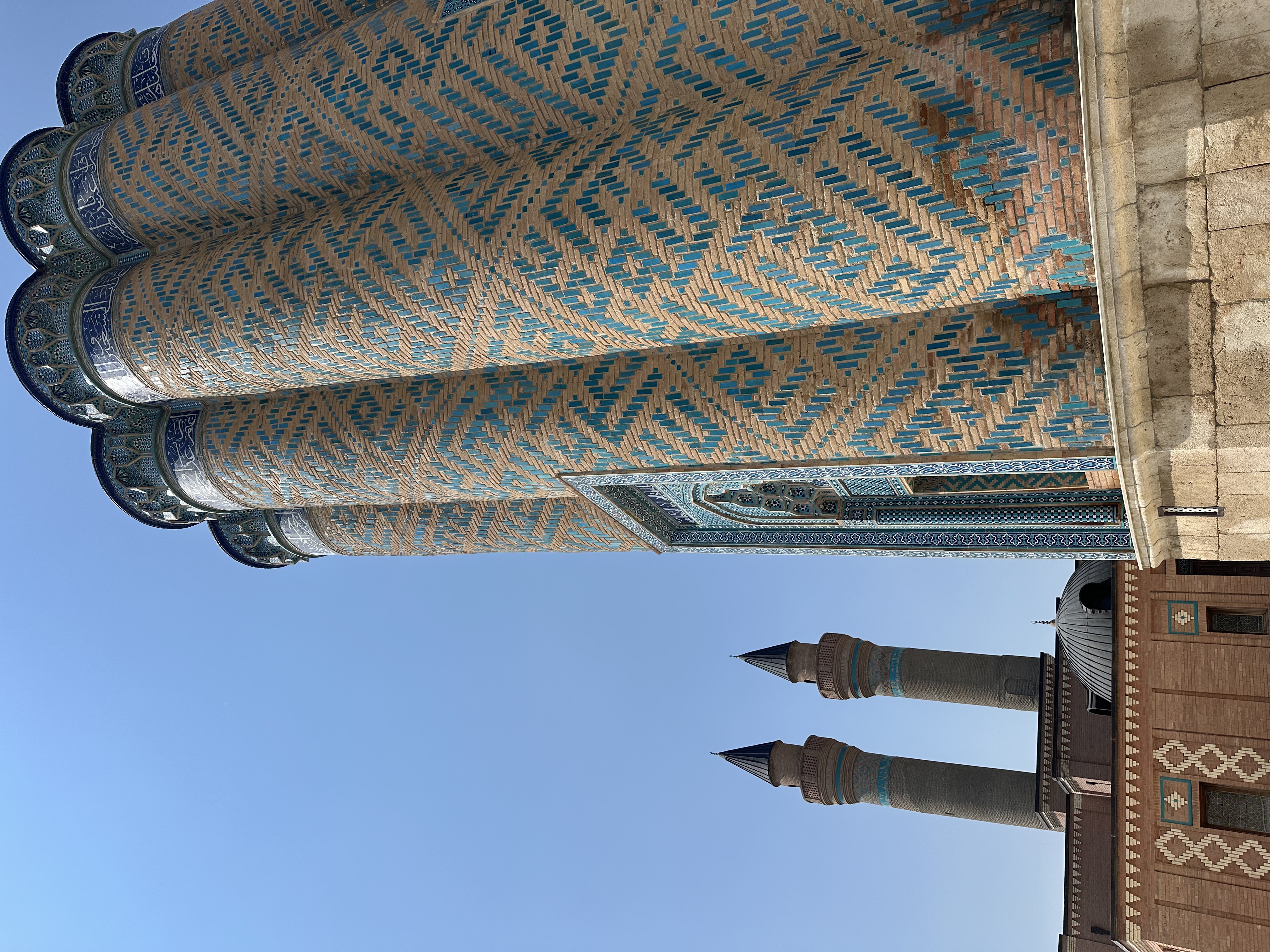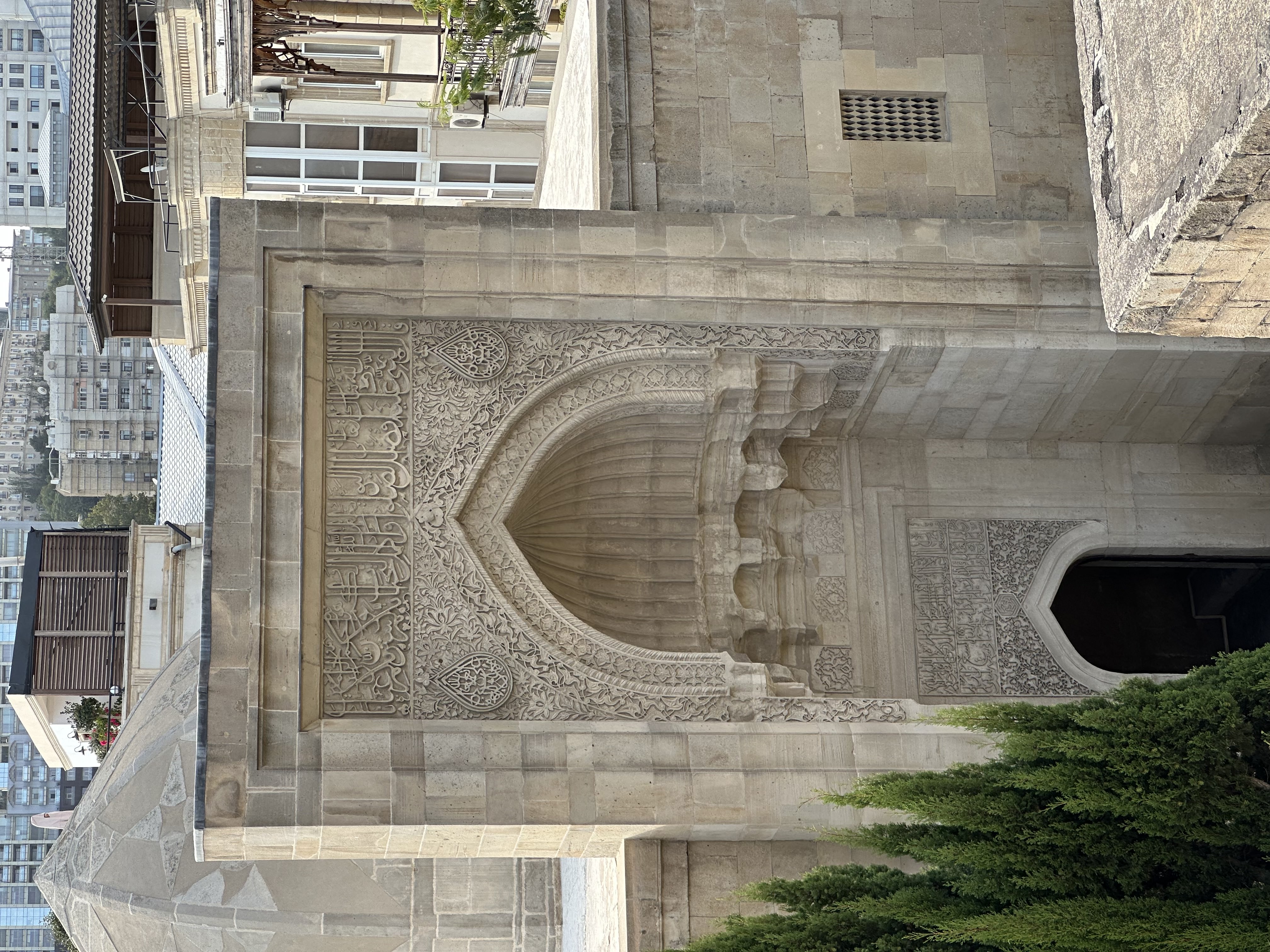(Summary) Qur’ānic Inscriptions in the Architecture of Azerbaijan between XII–XVI Centuries
Abstract
This paper explores the use of Qurʾānic inscriptions in Azerbaijani Islamic architecture between the 12th and 16th centuries, focusing on the regions of Nakhichevan and Baku. It examines the choice, function, and adaptation of verses, highlighting their religious, commemorative, and cultural significance.
Introduction
Qurʾānic inscriptions have adorned Islamic architecture since early Islam, yet Azerbaijan’s monuments remain underrepresented in existing research. Situated at the crossroads of empires, Azerbaijan developed two distinct architectural schools in Nakhichevan and Baku. This paper addresses which Qurʾānic verses were used, why they were selected, and how they were adapted into architectural forms.
Previous Research
Early studies by Azerbaijani scholars like Dadashev and Useynov provided initial surveys of Azerbaijani architecture. Later works by Bretanitsky, Salamzade, and Neimat advanced the field, although a focused study on Qurʾānic inscriptions remained lacking. This paper builds upon these foundational studies to provide a focused analysis.
Islam and Architecture in Azerbaijan
Islam was introduced to Azerbaijan in the 7th century. Over time, a synthesis of Islamic, Persian, Turkic, and local traditions shaped religious architecture. By the 12th century, two main architectural schools had emerged: the stone-based Shirvan-Apsheron style of Baku and the brick-and-tile tradition of Nakhichevan.
Qurʾānic Inscriptions in Nakhichevan
Analysis of the Mausoleum of Moʾmina Khatun (1186) and the Mausoleum in Qarabaghlar highlights the use of sūrahs like Yā Sīn and al-Mulk, focusing on themes of divine power, forgiveness, and the afterlife. Inscriptions were rendered primarily in Kufic script, integrated into geometric designs, and adapted to suit architectural surfaces.

Qurʾānic Inscriptions in Baku
At the Palace Complex of the Shirvanshahs, inscriptions combine Qurʾānic verses, hadiths, and pious expressions. Texts emphasize divine guidance, forgiveness, and the reward of the righteous. The inclusion of Shiʿi elements in a previously Sunnī context reflects later historical changes under Safavid influence.

Conclusion
Qurʾānic inscriptions in Azerbaijan’s medieval architecture served religious, commemorative, and political functions. By integrating sacred texts into architectural form, builders asserted Islamic faith and cultural continuity. This study contributes to Islamic architectural history by highlighting Azerbaijan’s distinct role in the broader Islamic world.